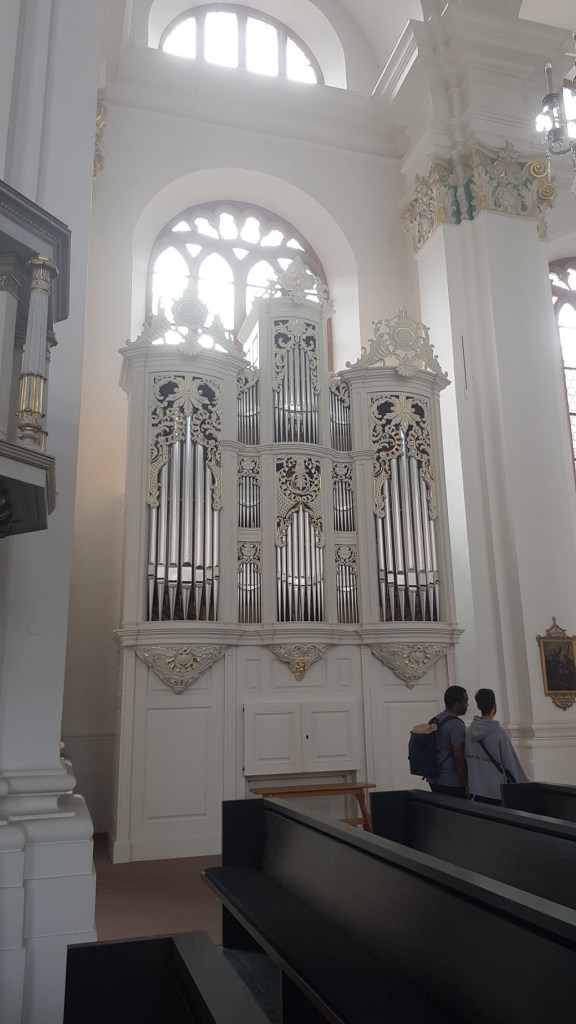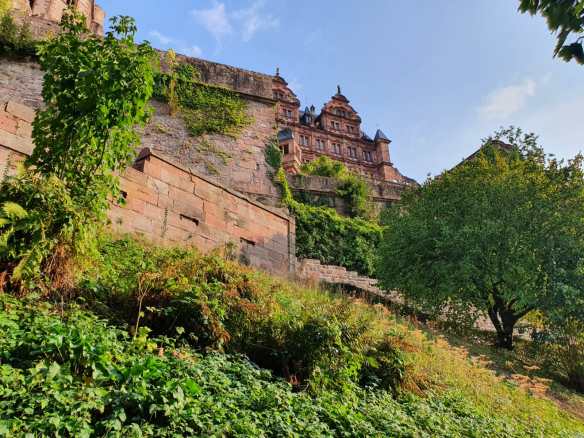
Mannheim, Germany is a city which is not on the tourist trail. It has a more modern build than many of the touristy cities in Europe. It is a university city and a gritty, working class city. It has neither the gleaming skyscrapers nor the fancy historical buildings. It is also very multicultural. There is a whole area called “Little Istanbul” and the standard of international cuisines in this city is very good.




Just a few minutes by train across the Rhine River is the city of Ludwigshafen. This is a city whose history is inextricably intertwined with the story and growth of the massive chemical company, BASF. Ludwigshafen dates back only 6 years older than BASF.
BASF is a worldwide company with over 111,000 employees but it’s headquarters is in Ludwigshafen. There are 39,000 employees that work at the Ludwigshafen plant. The plant is immense and takes up a space of 10 square kilometers. It is the world’s largest integrated chemical complex.
Visiting the BASF site was an absolute highlight of our visit to this region. It is amazing that a company running such a massive facility would allow the public to tour through their site in a bus. They run tours in a variety of languages throughout the week. These are available to book on their website. Due to the day we visited, we could only do a German tour. Luckily, there were only 2 other visitors that day so the tour guide did the tour in both English and German. First, we are guided through the visitor’s center followed by a bus tour of the plant. Unfortunately, photography is not allowed on the plant.
All 4 of us were driven through site in a massive double-decker tour bus. It was quite excessive as the giant bus carefully drove under piperacks and scaffolding. Despite the numerous hazardous chemicals being made and used on site, no road was off limits to the tour bus.
The plant is absolutely massive and we drove about 20km during the bus tour. It is so massive that it functions like its own small city with a fire-station, hospital, multiple bakeries and several canteens serving various cuisines. It is an impressive and mind boggling logistical exercise. The plant is located next to the Rhine River where both raw materials and products are transported via river barges. The railway also runs through the plant to carrying both materials and personnel. Actually, the tangled railway lines look more like a large rail switching station at one point.
We were surprised to note that despite the presence of many hazardous chemicals, productions plants and administration type buildings co-exist side by side. I would’ve thought to reduce the number of personnel in harm’s way, it would make more sense to keep admin buildings at a safe distance from the chemical plants. In this same vein, I was shocked to see so many people in t-shirts, shorts and sometimes even open toed sandals walking or cycling along the roads past both buildings and chemical production plants. I thought considering the close proximity to operating plant, it would be safer for all personnel to be in appropriate PPE type clothing e.g. steel capped boots, long pants and long sleeved shirts.
Also in very close proximity to the plant are the residential parts of the city which sit just outside the fenceline of the BASF site. The Rhein Galerie shopping centre is located only slightly upstream along the Rhein River. Any gas release or explosion on the plant would easily impact the city’s residents and those in Mannheim, on the other side of the river. It’s interesting to note the different mindset about safety in various industries and countries. Perhaps some of this is a legacy from this plant being operational at this location since about 1865!
It was also startling to note how many bicycles there are on site. I guess it should be no surprise with 39,000 employees working at the massive site. Everyone is issued with their own bicycle if they want one and they are allowed to ride it all the way home if they choose. It is 7km from the entrance to the far end of site where the harbour is located. It is no wonder that various modes of transport are required and used. Personnel can ride a bike, use a company vehicle, ride the tram or use the internal shuttle bus system.
Ludwigshafen is not a pretty city for tourists. It is however a city which forms an important industrial hub for Germany. If you ever have the opportunity to do a site tour of an industrial plant, or even to look at one from outside the fence, it is an opportunity not be missed. They are feats of human intellect, ingenuity, design and engineering. These are the places where so many of the things we take for granted in our comfortable modern lives are made.

The day after our bus tour of the BASF site, we caught the train from Manheim to Heidelberg and got back on the tourist trail with cobblestone streets, historic buildings, castles and touristy restaurants.













